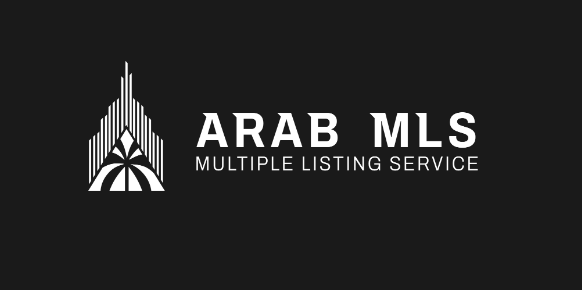In the digital age of real estate, where speed and accuracy drive decisions, the Multiple Listing Service (MLS) plays a vital role. It’s the backbone of property transactions, connecting buyers, sellers, agents, and brokers through a shared platform of property data. Yet, the strength of this system relies heavily on the accuracy and consistency of its data. A single inaccurate entry can disrupt deals, damage reputations, and mislead entire markets.
This makes quality control in MLS data entry not just a technical necessity, but a foundational requirement for building trust, enhancing efficiency, and maintaining compliance across the real estate landscape. This article explores the various dimensions of implementing effective quality control measures in MLS platforms, from identifying the root causes of data issues to leveraging technology and training for long-term improvements.
Why Data Quality in MLS Matters
MLS platforms are trusted sources of truth in real estate. Agents rely on the accuracy of data to price homes, set buyer expectations, and negotiate deals. Buyers and sellers use this data to make some of the most important financial decisions of their lives. Appraisers, banks, lawyers, and regulators also refer to MLS records to confirm facts and verify values.
A listing on the MLS isn’t just a line of text—it’s a legal and financial statement. An error in square footage, mislabeling the number of bedrooms, or outdated pricing information can lead to misrepresentation, failed transactions, or even legal action. Additionally, MLS feeds power countless third-party real estate websites. A mistake on one listing can be copied across dozens of platforms, multiplying the problem.
Without proper quality control, the MLS risks becoming a source of misinformation rather than a trustworthy marketplace.
Common Causes of Data Inaccuracy
Many data problems arise from human error. Agents may enter typos, misunderstand field definitions, or skip steps due to time constraints. For example, typing “2,500 sq ft” as “25,000” may seem like a minor slip but can make a property appear drastically different in value.
Another issue is incomplete listings. Some agents publish listings with placeholders or missing details, intending to complete them later. But in many cases, they forget or delay the updates, leading to properties that confuse or mislead other users.
Misunderstandings around terminology also create inconsistencies. New agents may not know the difference between terms like “condo” and “townhouse” or how to properly categorize a home’s architectural style.
Even well-meaning agents can enter inconsistent data due to system limitations, like non-standardized drop-down lists or free-text fields. For instance, one agent may write “walk-in closet,” another “Walk-in Closet,” and another “WIC.” Without standardization, the MLS becomes harder to search and analyze.
The Real-World Impact of Poor Quality Data
Bad data in MLS platforms has tangible consequences. For agents, it can lead to lost credibility and trust with clients. If buyers show up expecting features that aren’t present or are misled by listing details, they’re less likely to work with that agent again.

From a business standpoint, inaccurate data can affect a property’s visibility. Many MLS platforms and listing portals rank or filter properties based on completeness or correctness. A listing missing key photos or information might get pushed lower in search results.
In some cases, MLS inaccuracies can also lead to legal trouble. If a property is advertised as having three bedrooms but only has two with proper permits, this could be grounds for a lawsuit. Regulations like fair housing laws and consumer protection statutes require truth in advertising, and the MLS is no exception.
Strategies for Ensuring MLS Data Quality
Standardization of Input
One of the first and most important steps is ensuring that MLS data fields are standardized. This means creating consistent formats and options for critical listing information. By limiting free-text fields and using structured input—like drop-down menus or checkboxes—agents are less likely to make errors or use non-uniform terminology.
Fields such as property type, heating source, square footage, or status (active, pending, sold) should have predefined choices. This reduces the likelihood of inconsistency and simplifies the process of searching or filtering listings later.
Required Fields
Requiring certain fields before a listing can be published ensures that the most important information is always present. These required fields might include address, price, number of bedrooms and bathrooms, square footage, property status, and at least one photo.
By enforcing minimum data standards, MLS platforms can ensure every listing meets a baseline level of completeness. This is not only helpful to users but also improves data quality for market analysis.
Automated Error Detection
Modern MLS systems can incorporate built-in logic checks and automation to catch obvious mistakes. If an agent enters that a property has five bedrooms but only four total rooms, or if a property is listed at an unusually low price for the neighborhood, the system should generate a warning or request confirmation.
Other smart features might include reminders to update listing statuses, alerts for missing information, and verification checks that compare new entries against public records or previous listings.
Regular Data Audits
MLS administrators can improve data quality through regular audits. These can be random checks of current listings, targeted reviews of frequent problem areas, or scheduled evaluations of listings that have been on the market for an unusually long time.
These audits help identify patterns and systemic issues, such as consistent errors from specific users or common misunderstandings about certain fields. Once identified, the MLS can take steps to correct these issues and update user guidance or training.
Training and Agent Support
Human error is often a result of poor training or unfamiliarity with MLS systems. That’s why regular education is key. MLS platforms should offer onboarding for new users and periodic refresher courses for experienced agents. These can be done through webinars, in-person workshops, or interactive tutorials built into the platform.
Training should focus not only on how to use the system but also on why data quality matters—both from a compliance standpoint and a business perspective. When agents understand the value of accurate data, they are more likely to take care when entering information.
Listing Change Logs
Maintaining a detailed record of changes to each listing can help ensure accountability. By showing who made each edit and when these logs discourage careless behavior and make it easier to resolve disputes or investigate anomalies.
They also serve as a valuable training resource. MLS administrators can review change histories to see where users tend to go wrong and develop targeted solutions.
Quality Assurance Incentives
Positive reinforcement can be a powerful motivator. MLS organizations can encourage good data habits by recognizing agents who consistently produce high-quality listings. This could be through rankings, badges, or even incentives like reduced fees.
Similarly, patterns of consistent poor-quality listings could be flagged for retraining or review. This approach supports a culture of quality rather than punishment.
The Role of Technology in MLS Quality Control
As technology evolves, MLS platforms have more tools than ever to enforce quality control automatically and efficiently.
Artificial intelligence (AI) can help identify suspicious listings by comparing new data with public records, identifying unusual pricing, or flagging entries with inconsistencies. AI image recognition can scan photos to ensure they meet resolution requirements and identify duplicates or low-quality images.
Natural language processing (NLP) can be used to scan listing descriptions for compliance issues. For instance, it can detect problematic terms that may violate fair housing laws or local advertising standards.
Even blockchain is being explored in some systems to create immutable records of property history, which could help prevent fraud and ensure transparency in long-term data tracking.
These technologies are still evolving, but they offer powerful ways to reduce manual oversight and enhance MLS data quality at scale.
Challenges to Implementation
Of course, implementing strong quality control measures comes with challenges. Agents are often busy and may resist added friction in the listing process. Overly strict rules or tedious interfaces can slow them down or lead to frustration.
MLS operators must strike a balance between enforcing quality and keeping the system user-friendly. Usability testing, agent feedback, and gradual implementation can help ease the transition. Features should feel like helpful tools rather than roadblocks.
There’s also the issue of cost. Advanced validation tools, AI integrations, and support staff require investment. But in the long term, the ROI comes in the form of more accurate listings, fewer legal issues, higher customer satisfaction, and a better-performing platform.
Conclusion
Quality control in MLS data entry is far more than a technical formality—it’s an essential part of maintaining integrity, trust, and effectiveness in real estate markets. Whether you’re a broker, agent, MLS administrator, or tech provider, everyone benefits from accurate, consistent, and timely data.
By implementing standardized fields, automated checks, mandatory information, training, and smart technology, MLS platforms can drastically improve data quality. While the process requires effort, the payoff is well worth it: more efficient transactions, satisfied clients, and a reputation for professionalism that endures.
As the real estate industry continues to digitize and evolve, data quality will remain one of its most important assets.













